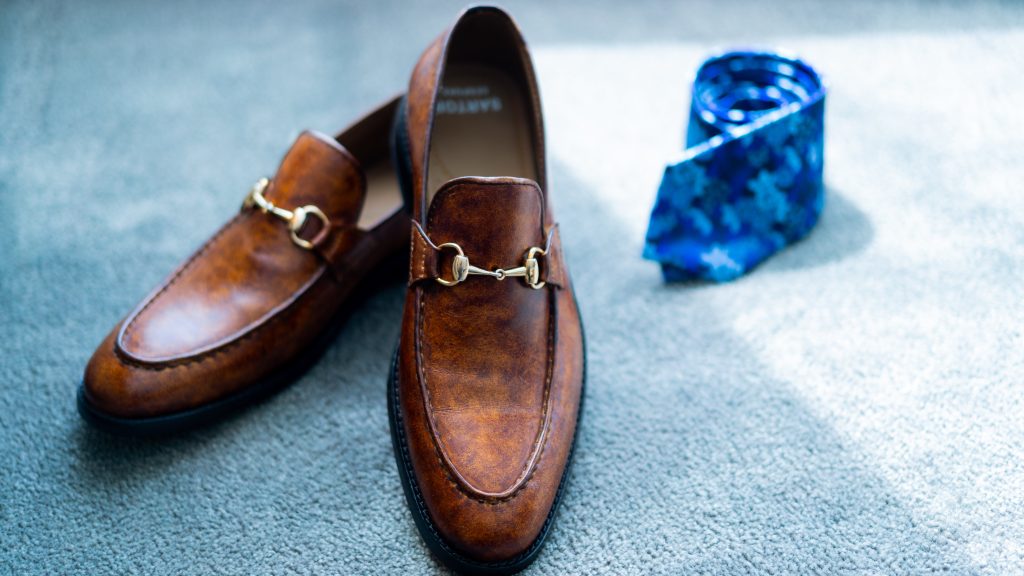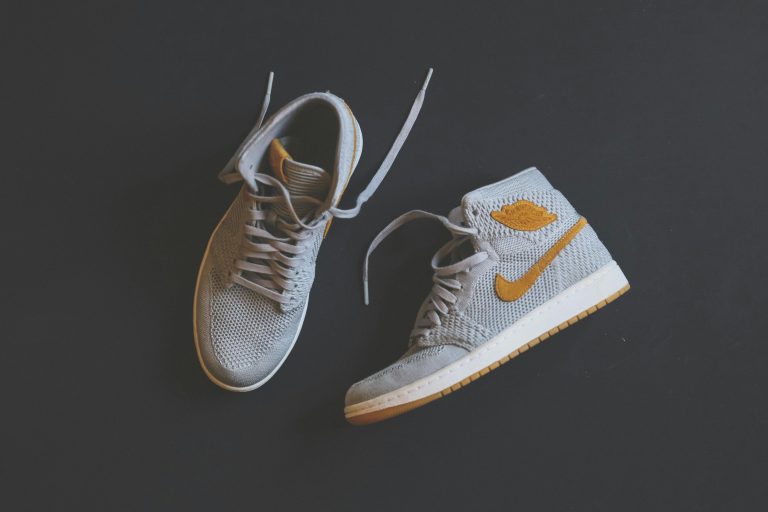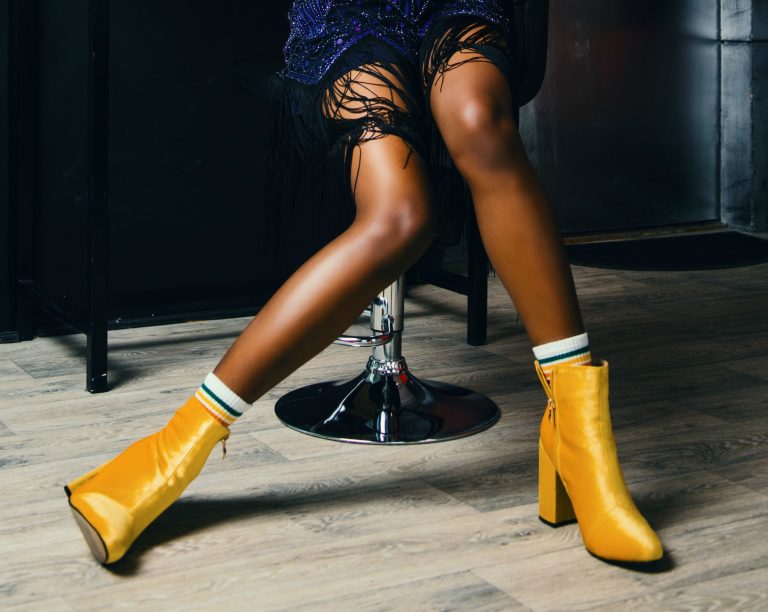Which Leather is Used for Shoes? A Guide to Leather Types and Qualities
Which Leather is Used for Shoes? Leather is a timeless material, has held a significant role in the world of shoemaking for centuries. Beyond its aesthetic appeal, leather contributes to the durability, breathability, and overall quality of footwear. In this comprehensive guide, we’ll explore the diverse landscape of leather used in crafting shoes, understanding the unique qualities, advantages, and considerations for consumers.

Introduction
Which Leather is Used for Shoes?
Leather’s importance in footwear extends beyond mere looks. It provides durability, breathability, and a classic appeal, making it a preferred material for both traditional and modern shoe designs.
The Variety of Leather Types
The leather market offers a plethora of options, each with distinct characteristics and applications. From full-grain to exotic leather, understanding these types is crucial for making informed choices as a consumer.
Understanding Full-Grain Leather
Definition and Characteristics
Full-grain leather, known for its natural appearance and minimal processing, retains the outer layer of the hide. This results in a material that is not only robust but also develops a unique patina over time.
Benefits of Full-Grain Leather
Boasting superior breathability and aging gracefully, full-grain leather is a popular choice for crafting high-quality shoes that withstand the test of time.
Common Applications in Shoe Manufacturing
Shoe artisans often choose full-grain leather for crafting premium products, including luxury dress shoes and high-end boots.
Exploring Top-Grain Leather
Characteristics and Distinctions
Top-grain leather undergoes more processing than full-grain but remains durable and retains a natural look. It strikes a balance between quality and affordability.
Pros and Cons in Shoe Craftsmanship
While top-grain leather offers a smoother surface and cost-effectiveness, some argue it may lack the character and longevity found in full-grain options.
Genuine Leather: The Versatile Option
Defining Genuine Leather
Genuine leather, often misunderstood as a lesser quality, is a term denoting real leather. It’s a broad category that includes various subtypes, each with its unique characteristics.
How It Fits into the Shoe Industry
Genuine leather finds application in a wide range of shoes, from casual to formal, providing consumers with an affordable yet genuine leather experience.
Factors to Consider
Despite its versatility, consumers should be aware of the diverse quality within the genuine leather category, prompting careful consideration.
Bonded Leather: An Affordable Alternative
Composition and Production
Bonded leather is a composite material made from leather scraps and synthetic fibers, offering a budget-friendly alternative.
Drawbacks and Its Limited Use in Shoes
While cost-effective, bonded leather may lack the durability of other options, limiting its use in high-quality, long-lasting shoe products.
Nubuck and Suede: Specialized Leather for Shoes
The Unique Qualities of Nubuck
Nubuck, akin to suede, undergoes a sanding process, creating a soft and velvety surface. It’s a choice for those seeking a unique texture in their footwear.
Suede’s Appeal and Limitations
Suede, renowned for its luxurious feel, is crafted from the inner side of the hide. However, it requires delicate care due to its susceptibility to stains and water damage.
Navigating the Choice for Shoes
Consumers must weigh the luxurious feel of nubuck and suede against their maintenance requirements when selecting footwear.
Exotic Leather: A Luxurious Touch
Overview of Exotic Leather Types
From alligator to ostrich, exotic leathers offer a luxurious and distinctive option for those seeking a unique statement in their shoes.
High-End Shoe Options and Considerations
Brands utilizing exotic leathers often create limited-edition, high-end shoes, catering to a niche market. However, ethical considerations and regulations surround the use of certain exotic materials.
Leather Quality and Shoe Durability
The Link Between Leather Quality and Shoe Longevity
Understanding the correlation between leather quality and shoe durability is crucial for consumers seeking a long-lasting investment.
Making Informed Choices as a Consumer
Examining the stitching, finishing, and overall craftsmanship provides insights into the quality of shoes, guiding consumers to make informed decisions.
Leather Care Tips
General Leather Maintenance
Proper care, including cleaning, conditioning, and storing, enhances the lifespan of leather shoes, irrespective of the type.
Specific Care for Different Leather Types
Different leather types require tailored care. Knowing the specific needs of the chosen material ensures its longevity and preserves its aesthetic appeal.
Sustainable Leather Choices
Eco-Friendly Leather Options
As consumers, opting for sustainable leather choices contributes to a greener fashion industry. Explore eco-friendly alternatives that align with your values.
Consumer Responsibility in Sustainable Fashion
Choosing sustainable leather is not just a trend; it’s a responsibility. Learn how you can make environmentally conscious choices in your leather purchases.
Trends in Leather Shoes
Emerging Styles and Designs
Explore the latest trends in leather shoe fashion. From classic designs to avant-garde styles, discover what’s making waves in the industry.
Influences of Leather Types on Fashion
Different leather types influence fashion trends. Understand how your choice of leather can contribute to your overall style statement.
Choosing the Right Leather for Your Shoes
Factors to Consider
Navigating the myriad options can be overwhelming. Consider factors like style, comfort, and durability to choose the right leather for your shoes.
Matching Leather Types with Personal Style
Your choice of leather reflects your personal style. Find the perfect match that complements your fashion preferences and lifestyle.
Case Studies: Famous Leather Shoe Brands
Examining Notable Brands and Their Leather Choices
Delve into case studies of renowned shoe brands. Learn from their choices and understand the consumer reviews and experiences associated with different leather types.
Future of Leather in Shoemaking
Technological Advancements in Leather Production
Stay informed about the latest technological advancements in leather production. Discover how innovation is shaping the future of leather in shoemaking.
Anticipated Trends in Leather Use
Explore predictions for the future of leather in the fashion industry. From sustainable practices to novel applications, discover what lies ahead.
Conclusion
Recap of Leather Types for Shoes
In conclusion, understanding the diverse world of leather is crucial for making informed choices when it comes to purchasing shoes.
Making Informed Decisions as a Consumer
By considering factors like leather type, quality, and sustainability, consumers can make choices that align with their values and preferences.
FAQs
- Q: How can I differentiate between full-grain and top-grain leather? A: Full-grain leather retains the outer layer of the hide, showcasing natural imperfections, while top-grain undergoes more processing for a smoother appearance.
- Q: Are exotic leathers ethically sourced for shoe production? A: Ethical considerations and regulations vary. It’s essential to research and choose brands committed to responsible sourcing.
- Q: Can suede shoes be waterproofed? A: Suede is susceptible to water damage, but waterproofing sprays designed for suede can offer some protection.
- Q: How often should I condition my leather shoes? A: The frequency of conditioning depends on factors like climate and usage. Generally, every few months is recommended.
- Q: What are sustainable alternatives to traditional leather? A: Explore eco-friendly options like plant-based leather, mushroom leather, and recycled materials for a sustainable choice.




Leave a comment